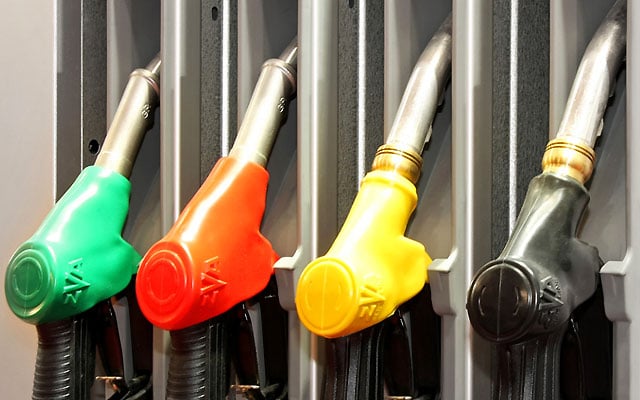21 October 2017
Inflation at its highest for more than five years has been partly fuelled by the ‘rocket and feather’ pump pricing the Office of Fair Trade dismissed as unproven in 2013. Average UK petrol prices are up to 2p a litre or £1 a tank higher than they should be, the AA Fuel Price Report concludes.
Drivers in some small rural towns are still paying prices close to the Hurricane Harvey highs of six weeks ago – up to 10p/litre or £5 a tank more than in towns with competitive supermarkets.

For the past month, wholesale petrol prices have been back below the 33p/litre mark of early August - when average pump prices were beginning to climb above 116p/litre.
At the start of this week, instead of returning to the August level, petrol averaged 118.02p/litre on UK forecourts. Diesel at the pump averaged 120.30p/litre. A month ago, retail petrol averaged 119.82p and diesel 120.53p/litre.
The fault lies partly with supermarkets, averaging a penny a litre more for petrol than in August. However, non-supermarket retailers average 4.7p/litre or £2.50 a tank dearer than supermarkets – the second biggest gap since Christmas 2015’s £1-a-litre price war.
The gap would be 5.1p/litre and the biggest in 22 months were Jet not undercutting other oil company brands by at least 1p/litre on petrol. Its diesel also averages 1p to 2p cheaper than its peers.
This is a repetition of what happened post Hurricane Katrina in 2005, when a 4p fall in wholesale prices took two months to be reflected at the pump. The AA charges that UK drivers are once again suffering from ‘rocket and feather’ pump prices.
The impact of oil prices hitting a two-year high in recent months has been offset by a fall in the commodity value of petrol compared to the price of oil. Post-Hurricane Harvey demand pushed the commodity price of petrol to 11.5 times the value of crude, but that has now fallen back to just under 10 times the value of crude. According to International Energy Agency data, NW Europe refining margins in August reached their highest since August 2015.
Drivers are being fleeced by the feather effect
“Outside urban areas with supermarket competition, drivers are being fleeced by the feather effect each time they go onto small rural town forecourts and see fuel costs that are up to 10p/litre higher than in bigger towns,” says Edmund King, the AA’s president.
drivers are being fleeced by the feather effect each time they go onto small rural town forecourts and see fuel costs that are up to 10p/litre higher than in bigger towns
“Last week, Jet reopened a fuel station on the outskirts of a small rural town in Hampshire, charging 115.9p for petrol and 116p for diesel. Two miles down the road, in a neighbouring small rural town, two petrol stations on opposite sides of the road were both charging 121.9p for petrol and 123.9p for diesel. Even if the re-opened one’s prices may have a promotional element, the 6p/7p difference shows that prices could come down and the retailer still be profitable. The AA’s conclusion – drivers are being taken for a ride.”
“However, it’s not just rural small town forecourts. Petrol pump prices in general are 1p to 2p/litre higher than they were in August when the wholesale price was slightly higher. That is adding to inflation and the burden on families and young workers who rely on their car. The UK consumes 1.4 billion litres of petrol a month and the 1.5p/litre feathering of falling pump prices diverts £21 million a month away from potential high street spending – money that hard-pressed consumers could use to combat inflation in the shops.”
